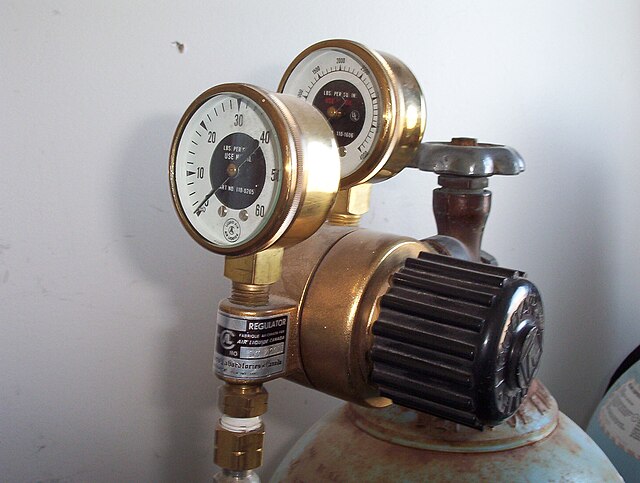A ceiling balloon also called a pilot balloon or pibal, is used by meteorologists to determine the height of the base of clouds above ground level during daylight hours. In the past, and sometimes today, a theodolite was used to track the balloon in order to determine the speed and direction of winds aloft.
The principle behind the ceiling balloon is that timing of a balloon with a known ascent rate from its release until it disappears into the clouds can be used to calculate the height of the bottom of the clouds.
A fully inflated ceiling balloon
A ceiling balloon cabinet
Close up of the filler stand
Regulator valve and pressure gauges attached to helium cylinder
A theodolite is a precision optical instrument for measuring angles between designated visible points in the horizontal and vertical planes. The traditional use has been for land surveying, but it is also used extensively for building and infrastructure construction, and some specialized applications such as meteorology and rocket launching.
A direct-readout theodolite, manufactured in the Soviet Union in 1958 and used for topographic surveying
Diagram of an optical readout theodolite
Jesse Ramsden's Great Theodolite of 1787
A theodolite of 1851, showing the open construction, and the altitude and azimuth scales which are read directly








